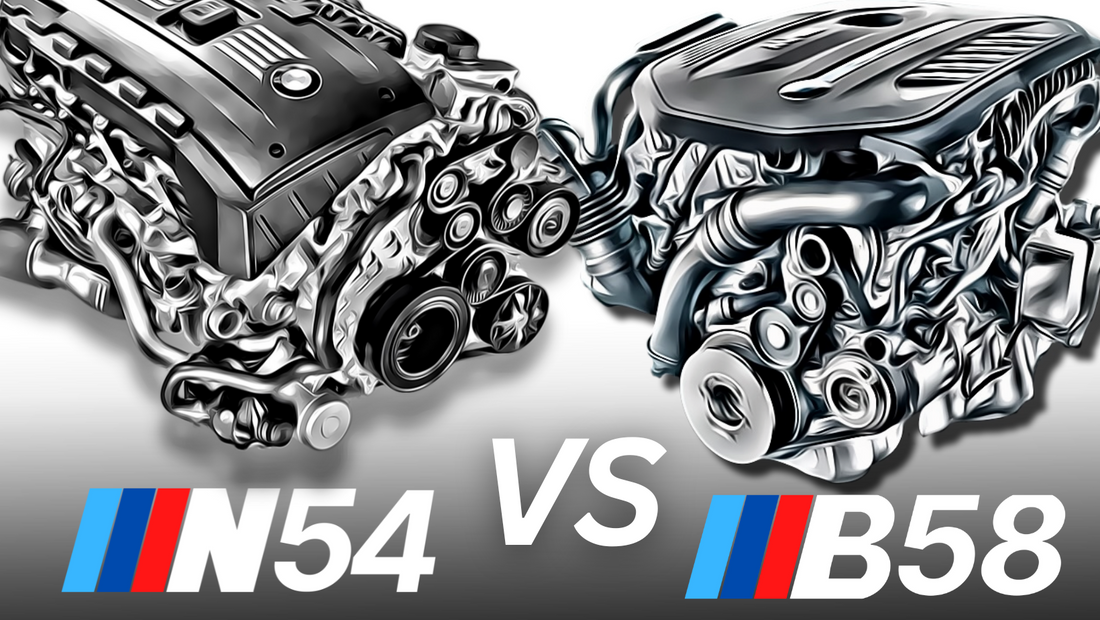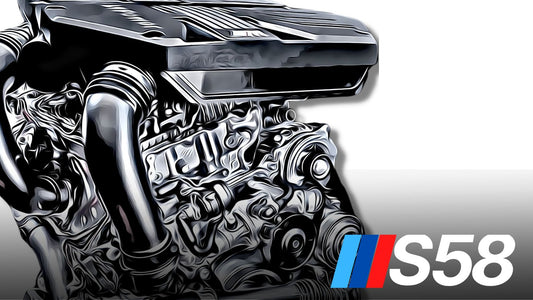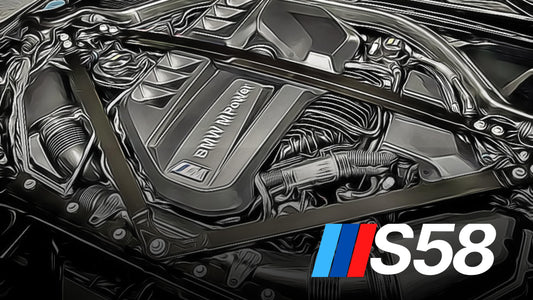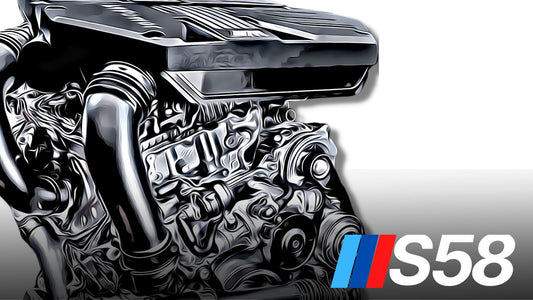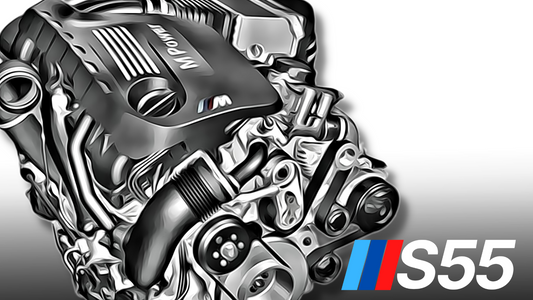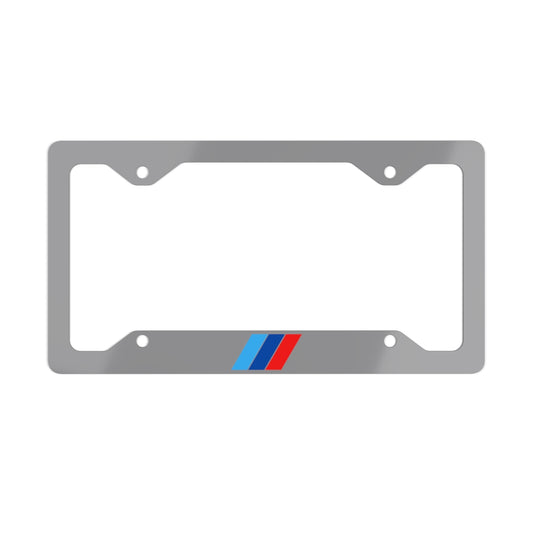Whether you prefer the N54's pioneering spirit or the B58's advanced technology, both engines represent BMW's performance and engineering excellence. They are still revered in the automotive industry, each leaving its mark on BMW engineering.
Introduction
BMW's journey into engineering remarkable engines has led to the creation of many iconic powerhouses, among which the N54 and B58 stand out. These two engines, though born in different eras, are benchmarks in BMW's history and have a following among automotive enthusiasts. In this post, we delve into their characteristics, performance, and the unique qualities that endear them to BMW aficionados.
The BMW N54 Engine: A Modern Classic
Introduction: The N54, introduced in 2006, marked BMW's foray into the world of turbocharged gasoline engines. It was a departure from the naturally aspirated units that the brand was known for, signaling a new direction in BMW's engine development.
Design and Technology: The N54 is a 3.0-liter inline-six engine featuring twin turbochargers. This design choice was made for better throttle response and to reduce turbo lag. The engine has a direct injection fuel system, which contributes to its efficient combustion and power output. However, this complex structure has been associated with certain reliability issues, including high-pressure fuel pump failures and wastegate rattling problems.
Performance: The N54 engine is celebrated for its robust power output and tuning potential. It churns out a respectable 300 horsepower and 300 lb-ft of torque in its standard form. However, with modifications, it can easily push beyond these figures, making it a darling of the tuning community.
Legacy: Despite its technical issues, the N54 has a cult following due to its performance and tunability. It has won numerous awards, including the International Engine of the Year.
The BMW B58 Engine: The Refined Successor
Introduction: Launched in 2015, the B58 represented the next evolution of BMW's inline-six turbocharged engines. It's part of BMW’s modular engine family, which harmonizes design across various engine types.
Design and Technology: The B58 is a 3.0-liter turbocharged inline-six engine, but with a significant design overhaul compared to the N54. It uses a single twin-scroll turbocharger, which helps in reducing turbo lag and improving efficiency. The engine incorporates Valvetronic (variable valve lift) and Double VANOS (variable valve timing) technologies, enhancing its performance and fuel economy.
Performance: In its standard configuration, the B58 outputs up to 382 horsepower and 369 lb-ft of torque. It's known for its smooth power delivery and relatively lower fuel consumption compared to its predecessor. The B58 has also tackled many of the reliability issues seen in the N54, making it more dependable for daily use.
Reliability and Issues: While the B58 is generally more reliable than the N54, it's not without its problems. Common issues include water pump failures and timing chain tensioner failures, which, if not addressed, can lead to significant engine damage.
Comparing N54 and B58
| Specification | BMW N54 | BMW B58 |
|---|---|---|
| Stock Power | 300 HP | ~330 HP |
| World Record HP | ~1,005 WHP | ~900 WHP |
| Displacement | 2979 cc (2.979 L) | 2998 cc (2.998 L) |
| Turbocharger | Twin Turbo | Single “Twin Power” Turbo |
| Compression Ratio | 10.2 to 1 | 11.0 to 1 |
| Bore x Stroke | 84.0 mm x 89.6 mm (3.31” x 3.53”) | 82.0 mm x 94.6 mm (3.23in x 3.72in) |
| Internals | Forged crank and rods, Cast pistons | Forged crank and rods, Cast pistons |
| Block Design | Open-deck | Closed Deck |
| Redline | 7000 RPM | 7000 RPM |
| Injectors | Piezo direct injection | Not specified |
Power and Performance: Both engines offer excellent performance, but the B58 edges out with its higher base power output and improved efficiency. The N54, however, has a massive tuning potential that the B58 also shares to a great extent.
Technology and Design: The B58 benefits from advancements in technology and design, leading to better fuel efficiency, smoother power delivery, and fewer emissions. The N54's twin-turbo setup is more complex and prone to certain issues, unlike the more streamlined design of the B58.
Reliability: The B58 is generally seen as more reliable than the N54. The N54’s issues with fuel pumps, wastegate rattles, and carbon buildup are well documented, while the B58's problems, though existent, are less frequent and severe.
Tuning Potential: Both engines are tuners' favorites, but the N54 holds a special place due to its earlier entry into the market and the extensive community knowledge built around modifying it. The B58 is catching up, offering substantial tuning capabilities.
Conclusion
The N54 and B58 engines are both remarkable in their rights. The N54 is a modern classic, loved for its raw power and tuning potential, despite its flaws. The B58 represents a more refined approach, balancing performance with efficiency and reliability. Each engine has its charm and appeals to different segments of BMW enthusiasts.
Whether you prefer the pioneering spirit of the N54 or the advanced technology of the B58, both engines embody BMW's commitment to performance and engineering excellence. They continue to be celebrated in the automotive world, each carving out its own unique legacy in the annals of BMW’s engineering history.

